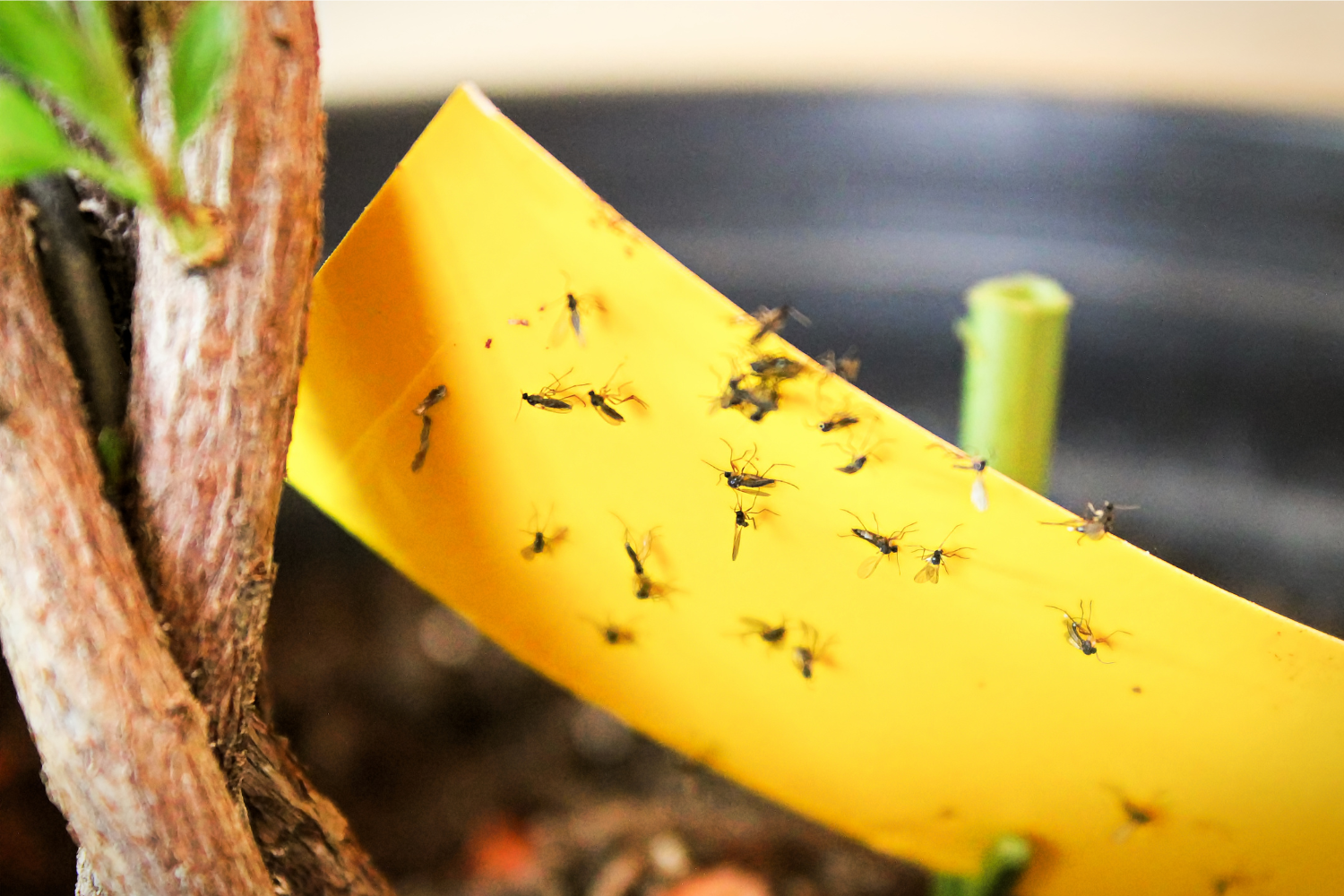How to Get Rid of Fungus Gnats for Good
•Posted on August 18 2022

Most people don't even know what fungus gnats are, let alone how to get rid of them for good.
It's not just about the grossness factor, either—these little guys can do some serious damage to your plants.
Related Post: 5 Harmful Garden Insects and How to Eliminate Them
They'll lay their eggs in your soil and feed on the roots of your plants.
That's bad news for you, especially if you're a new gardener still learning to care for your plants.
So how do you get rid of fungus gnats? We're going to tell you.
Recommended for You:
What Are Fungus Gnats?

Fungus gnats which are also referred to as biting gnats, are small, black flies that look like houseflies and can often be confused with them.
They have long, thin bodies with a pointed heads.
The wings of these tiny pests are clear or smoky grey, and they usually have a yellowish stripe along their sides.
The larvae of fungus gnats look like maggots.
They have black heads, red eyes, and white bodies, which become dark grey as they mature.
Where Do Fungus Gnats Come From?

The easiest way to get fungus gnats is by introducing new plants that had grown in soil infested with fungus gnat larvae.
Related Post: 6 Friendly Bugs You Want in Your Garden
Fungus gnats have a life cycle of only about 10 days, which means you can have an infestation within a week or two if you do not control it.
Fungus gnats can come from compost piles, potting soils, and manure.
These insects like dark places, so they are usually found in the corners of your garden or under mulch or other debris.
If you see small black flies flying around your plants, it could be fungus gnats.
They're often confused with other pests because they look similar to other pests, such as root aphids, drain flies, thrips, and springtails.

So how do you tell them apart?
Here's a quick guide:
-
Drain flies are usually found around drains and toilets; they don't eat plant roots.
-
Thrips are greenish-black bugs with narrow wings covering almost their entire body; they don't eat plant roots.
-
Root aphids (not to be confused with root mites) are white bugs that live on your plant's root system.
-
Springtails are smaller than fungus gnats but still have wings; they don't eat plant roots.
Recommended for You:
How Do I Permanently Get Rid of Fungus Gnats?

The best way to get rid of fungus gnats is by preventing them from entering your garden in the first place.
Related Post: 7 Plants That Will Repel Pesky Mosquitoes This Summer
Here are some tips on how to prevent fungus gnats from invading your indoor garden:
1. Inspect your plants thoroughly every day for signs of fungus gnats or gnat eggs.
2. Get rid of standing water:
Fungus gnats thrive in water-filled containers like vases, flower pots, or even small puddles on the floor.
If you have standing water in any of these areas, it is time to drain it out.
3. Don't over-fertilize your plants:
Fungus gnat eggs are mostly found in moist soil fertilized heavily with manure or composted manure.
You should avoid over-fertilization if possible, as this will increase the likelihood that fungus gnat larvae will develop in your soil.
Something like our Azomite that provides micronutrients to plants would be a great option because you won't need to apply a lot of fertilizer if you want your plants to remain healthy.
Recommended for You:
4. Make sure you use sterile potting soil which has been pasteurized before being sold so that it doesn't contain any live organisms that could potentially harbor fungus gnat larvae (example, bacteria or fungi).
5. Avoid overwatering your plants, as this creates an environment for biting gnats to thrive.
Related Post: How Soil Moisture Can Affect Your Plant's Growth
We know you've got a lot on your plate. So let us take care of some of your fertilizer needs—it's the least we can do for our fellow farmers and gardeners.
Whether you have dry and yellow indoor palms that need a boost from our Manganese Sulfate or an indoor tomato garden that can be nourished with our specially formulated Tomato 4-18-38 fertilizer, rest assured that by shopping our fertilizer collection, your indoor plants can get the nutrients they need without the hassle of fungus gnats.
Recommended for You:
Comments
0 Comments
Leave a Comment